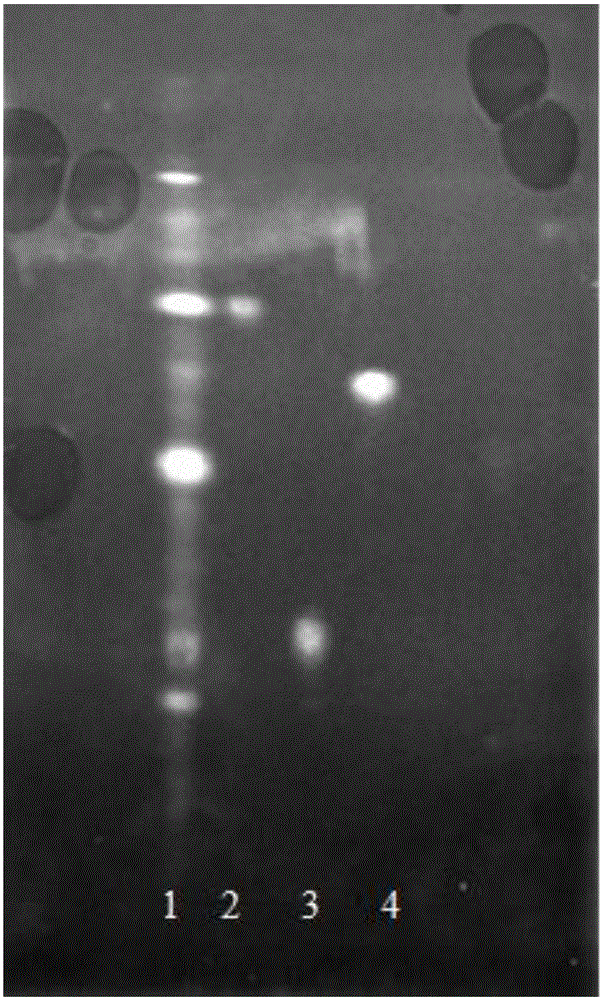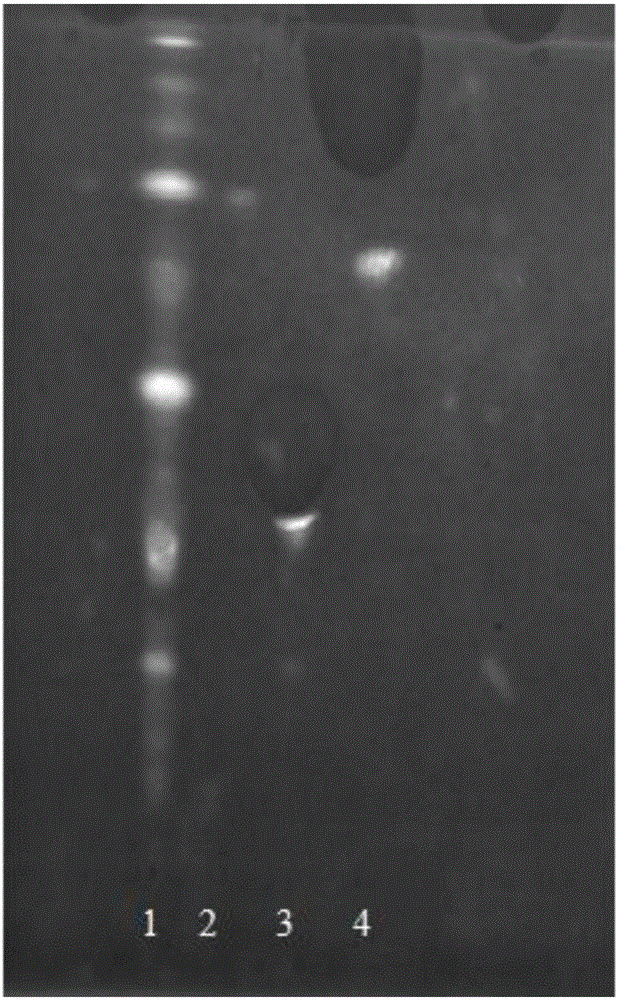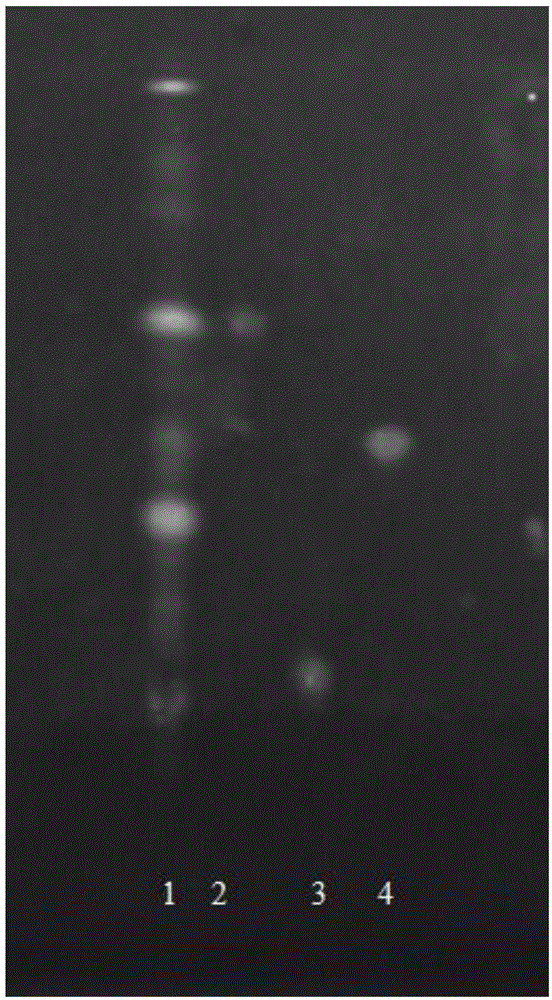A thin-layer chromatographic analysis method for detecting flavonoids in Polygonum viburnum
A technology of thin-layer chromatography and analysis method, which is applied in the field of thin-layer chromatography analysis of flavonoids in Polygonum versicolor, can solve the problems of high skill requirements for experimenters, high dosage of toxic reagents, and high cost of instruments, and achieve strong specificity , authenticity identification and quality control are simple, and the effect of accurate identification
- Summary
- Abstract
- Description
- Claims
- Application Information
AI Technical Summary
Problems solved by technology
Method used
Image
Examples
Embodiment 1
[0026] Preparation of the test solution: Take 10 g of the sample and place it in a 500 mL round-bottomed flask, add 250 mL of anhydrous methanol, then add 60 mL of dilute hydrochloric acid with a mass fraction of 25%-30%, reflux in a water bath at 80°C for 2 hours, and place it on ice immediately after taking it out Cool in a bath, filter, take the filtrate and evaporate to dryness under reduced pressure on a rotary evaporator to remove the solvent, add 1 mL of methanol to the residue to dissolve, centrifuge to get the supernatant, mix the sample with 2 g of 200-300 mesh silica gel, and set aside.
[0027] Weigh 25g of 200-300 mesh silica gel, stir it with dichloromethane until there are no bubbles, pack it into a column with a volume of 70mL, use dichloromethane:methanol=100:5 to elute, and collect the polar segment A, Evaporate the eluents of polar segment B and polar segment C to dryness, and add 2 mL of methanol to redissolve, respectively, to obtain 3 parts of the test sol...
Embodiment 2
[0032] Different from Example 1, the conditions of thin-layer analysis are as follows, take each 10 μL of the test solution and the reference solution, and place it at 10 mm from the bottom edge of the silica gel G thin-layer plate, with a volume ratio of 25:0.6:0.5: 2 The dichloromethane-acetone-methanol-formic acid system is used as a developing agent, and the above-mentioned developing system is pre-balanced for 10 minutes on one side of the double-slot developing cylinder under the condition of a temperature of 22°C and a humidity of 70%. 10cm, carry out secondary expansion. The condition of color development is to spray 5% AlCl on the volatilized thin-layer plate 3 ,, dry it, put it under ultraviolet light to inspect the fluorescent TLC spots, and obtain the flavonoid composition map of Polygonum versicolor medicinal material, see figure 2 . 1, 2, 3, and 4 in the spectrum are the substances of the polar segment A of the test product, the reference substance of isorhamn...
Embodiment 3
[0034] The difference from Example 1 is that the conditions of TLC analysis are as follows, take 10 μL each of the test solution and the reference solution, and place it at a distance of 10 mm from the silica gel G thin-layer plate, with a volume ratio of 30:1.0:0.5:2 The dichloromethane-acetone-methanol-formic acid system is used as a developing agent. Under the conditions of temperature 25°C and humidity 80%, add the above-mentioned expansion system to one side of the double-slot expansion cylinder for pre-equilibration for 10 minutes, and expand upward with a spread distance of 10cm. , for a second expansion. The condition for color development is to spray 7% AlCl on the volatilized thin-layer plate 3 The solution was dried in the air, and the fluorescent thin-layer chromatography was inspected under an ultraviolet lamp to obtain the flavonoid composition spectrum of the Polygonum versicolor medicinal material, see image 3 . 1, 2, 3, and 4 in the spectrum are the substance...
PUM
 Login to View More
Login to View More Abstract
Description
Claims
Application Information
 Login to View More
Login to View More - R&D
- Intellectual Property
- Life Sciences
- Materials
- Tech Scout
- Unparalleled Data Quality
- Higher Quality Content
- 60% Fewer Hallucinations
Browse by: Latest US Patents, China's latest patents, Technical Efficacy Thesaurus, Application Domain, Technology Topic, Popular Technical Reports.
© 2025 PatSnap. All rights reserved.Legal|Privacy policy|Modern Slavery Act Transparency Statement|Sitemap|About US| Contact US: help@patsnap.com



